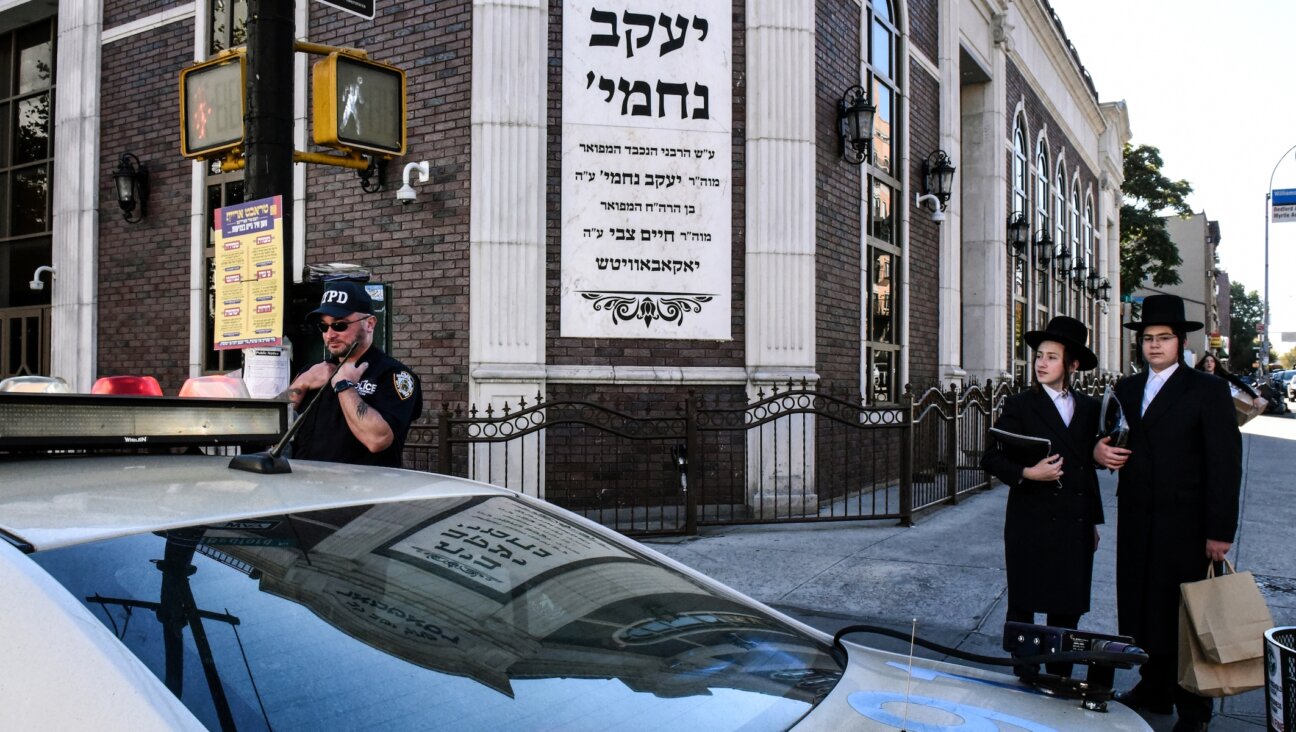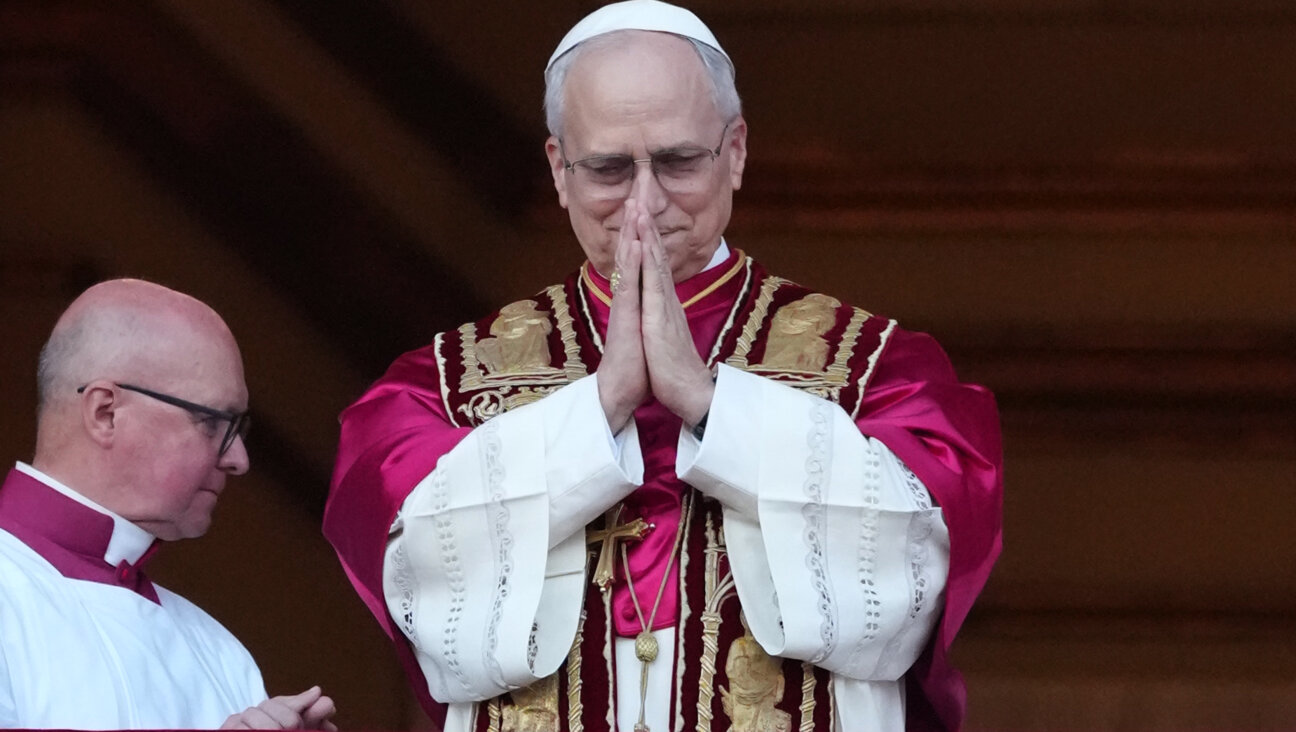Nazis stole thousands of pieces of art — but that was only the beginning of the story

Drawings and sketches from concentration camp prisoners and people in hiding during WWII. By Mira Fox
In most art exhibits, each piece has a plaque that identifies the title, artist, subject, and style. At The Jewish Museum’s newest exhibit, however, each plaque has two descriptions. The first is a standard explanation of the piece. The second explains who owned the painting before the Nazis stole it — and how it was later recovered.
“Afterlives: Recovering the Lost Stories of Looted Art” shows not only the breadth of cultural heritage smuggled away by the Nazis but also the journeys the pieces of art went on after being recovered from Nazi vaults or transports.

Paul Cezanne’s “Bather and Rocks” was confiscated from the
French Jewish art collector Alphonse Kann and hung in the Room of Martyrs. While being transported to a new facility, it was found outside Paris by Free French soldiers, and returned to its owner after the war. By Mira Fox
While the gallery has some starpower, the main takeaway has little to do with the stylized composition of Matisse’s “Daisies” or the enormous 17th-century biblical oil painting by Bernardo Strozzi. (If anything, the wall text and contextual framing makes it hard to approach the art directly in light of the destruction wrought by the Nazi regime.) Instead, the exhibit follows what happened to the art and where it went; the paintings serve as anchors for the history the exhibit explores.
Without the descriptions, some of the art would show no signs of their connection to the war and the Holocaust. Paul Cézanne’s “Bather with Rocks” was confiscated from a Jewish collector’s vault and eventually rescued off of a Nazi transport train, but looking at the larger than life nude portrait, of course you would never know. Paul Klee’s “Two Trees,” with its abstract slashes of paint, also bears no signs that he created it after fleeing the Nazi regime, which labeled him degenerate.

The entry to the exhibit features a photo of the “Room of the Martyrs” at the Jeu de Paume gallery where the Nazis hung much of their looted art before deciding its fate. The Room of the Martyrs was filled with art considered degenerate and often slated for destruction. By Mira Fox
Others, however, hanging in a gallery with a wall text explaining that its works were “created under duress,” bear more obvious signs of their history. There are sketches from Terezin, a transit and labor camp, and portraits of captives and fugitives made while on the run. Roma children gaze out from rags and people scurry through piles of broken furniture. Shelves of silver Judaica, a small sample of what was found, underscoring the number of Jewish communities extinguished during the Holocaust, never to reclaim their silver Torah crowns or Hebrew books.
The exhibit moves chronologically, focusing on where the art was gathered, how the Nazis stole it and how the restitution process worked after the war. It starts with a room full of recognizable masterpieces by the likes of Picasso and Matisse, explaining how the pieces were stored by the Nazis at the Jeu de Paume, a museum in Paris, where Nazi officials decided which were slated for destruction and which would go to private collections or Hitler’s planned Fuhrermuseum. It goes on, through several other rooms, to trace the art’s journey after the war through sorting depots and restitution organizations that attempted to rehome objects whose owners were killed in the Holocaust.

Two spice containers for the Havdalah ritual, from the Jewish Museum’s collection. By Mira Fox
The Jewish Museum itself, which opened to the public in 1947, is an active player in much of this history. It was central to the restitution effort after the war, acting as a collection depot for unclaimed Judaica and Hebrew books retrieved from Nazi vaults and storage facilities, which were then distributed to Jewish communities throughout the country. Many objects passed through the museum thanks to the Jewish Cultural Reconstruction Inc., an organization led by Hannah Arendt.
Some parts of this history, however, could have received more attention in the exhibit. The wall text in the beginning of the exhibit lays out some of the importance of art to the Nazis, who sold some masterpieces to fund their war effort and hoarded others to bolster the regime’s prestige. But despite the many references to art and artists deemed degenerate by the Nazis, the exhibit doesn’t explore the idea of what constituted degenerate art in the eyes of the Nazis, why modern art was considered un-German, and why Hitler and Goering sought certain works to be part of their private collections.

Bernardo Strozzi’s 1600s era “Act of Mercy: Giving Drink to the Thirsty” was confiscated from Viennese Jewish industrialist Oscar Bondy and earmarked for Hitler’s planned Fuhrermuseum. By Mira Fox
Similarly, the exhibit could have provided more context to help visitors understand how modern and abstract styles of painting were connected with the supposed degeneracy of the Jewish people, such as through the seminal, propaganda-filled Nazi exhibition, “The Exhibition of Degenerate Art,” in 1937 that denigrated schools of art such as Surrealism.
The last rooms of the exhibition feature modern works commissioned by the Jewish Museum, which explore the ideas of looted art’s history, including sketches of the archival photos from the restitution depots by Hadar Gad, an Israeli artist, and a collage by the Brooklyn-based Lisa Oppenheim using a photograph of a never-found piece of art by Jean-Baptiste Monnoyer.
While the famous works of looted art are the most striking part of the galleries — Picasso, Cezanne, Matisse, Klee — they more feel like a flashy introduction to the explanation of the restitution process. What the exhibit excels at, however, is highlighting the painstaking work that went into restoring justice to the extent possible, bringing the stolen treasures back to the world.
And that is perhaps the point — the Nazis, despite their best efforts, did not control art’s fate. It lives on.
“Afterlives: Recovering the lost stories of looted art” runs August 20 – January 9 at the Jewish Museum, 109 5th Ave, New York, NY.
The Forward is free to read, but it isn’t free to produce

I hope you appreciated this article. Before you go, I’d like to ask you to please support the Forward.
Now more than ever, American Jews need independent news they can trust, with reporting driven by truth, not ideology. We serve you, not any ideological agenda.
At a time when other newsrooms are closing or cutting back, the Forward has removed its paywall and invested additional resources to report on the ground from Israel and around the U.S. on the impact of the war, rising antisemitism and polarized discourse.
This is a great time to support independent Jewish journalism you rely on. Make a gift today!
— Rachel Fishman Feddersen, Publisher and CEO
Support our mission to tell the Jewish story fully and fairly.
Most Popular
- 1

Fast Forward Ye debuts ‘Heil Hitler’ music video that includes a sample of a Hitler speech
- 2

Opinion It looks like Israel totally underestimated Trump
- 3

Culture Cardinals are Catholic, not Jewish — so why do they all wear yarmulkes?
- 4

Fast Forward Student suspended for ‘F— the Jews’ video defends himself on antisemitic podcast
In Case You Missed It
-

Culture Should Diaspora Jews be buried in Israel? A rabbi responds
-

Fast Forward In first Sunday address, Pope Leo XIV calls for ceasefire in Gaza, release of hostages
-

Fast Forward Huckabee denies rift between Netanyahu and Trump as US actions in Middle East appear to leave out Israel
-

Fast Forward Federal security grants to synagogues are resuming after two-month Trump freeze
-
Shop the Forward Store
100% of profits support our journalism
Republish This Story
Please read before republishing
We’re happy to make this story available to republish for free, unless it originated with JTA, Haaretz or another publication (as indicated on the article) and as long as you follow our guidelines.
You must comply with the following:
- Credit the Forward
- Retain our pixel
- Preserve our canonical link in Google search
- Add a noindex tag in Google search
See our full guidelines for more information, and this guide for detail about canonical URLs.
To republish, copy the HTML by clicking on the yellow button to the right; it includes our tracking pixel, all paragraph styles and hyperlinks, the author byline and credit to the Forward. It does not include images; to avoid copyright violations, you must add them manually, following our guidelines. Please email us at [email protected], subject line “republish,” with any questions or to let us know what stories you’re picking up.















